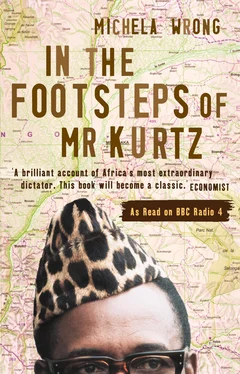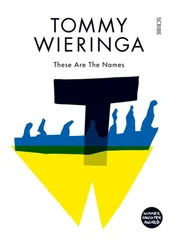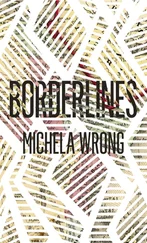Under pressure from foreign allies and his own parliament, the ailing Leopold agreed in 1908, after long negotiations, to hand over Congo to the Belgian state, instead of bequeathing it to his country on his death as he had originally planned. He died a little more than a year later, having never once set foot in the colony his policies had so devastated.
But he had achieved his aim. Congo’s massive contribution to Belgium’s development is still on show in the capital, if only you know where to direct your gaze. Leopold was a king who wanted to leave his mark on the city of Brussels, and brand it he did, thanks to this independent monetary source he could tap at will.
For visitors interested in the history of Brussels, several companies today offer themed coach trips around the city. A favourite is the Art Nouveau tour, which traces the rise and fall of the design movement that blossomed on the cobbled streets of the hilly city as nowhere else, and the high moment of the tour is undoubtedly the apricot-coloured Hotel Van Eetvelde on Avenue Palmerston, around the corner from the Jamaican embassy and a stone’s throw from the plate-glass horrors of Euroland.
Here architect Victor Horta, guiding light of the Art Nouveau movement, was given free reign by Edmond Van Eetvelde, a wealthy diplomat who wanted a fitting venue in which he and his wife could receive business guests. ‘I presented him with the most daring plan I had ever, until that point, drawn up,’ recalled Horta. Taking advantage of the blank cheque issued him, he produced a building so lavishly decorated, so consistent in its artistic vision, the overall effect is almost nauseating.
From the octagonal drawing hall to the mosaic floors, from the delicate tendrils of the wrought-iron banisters to the motif on the coloured glass roof, the Hotel Van Eetvelde is pure Horta. It is also pure Congo. The hardwoods that lined the ceilings, the marble on the floors, the onyx for the walls and the copper edging each step of the curving staircase all came from the colony. What did not come directly from the colony was paid for with its proceeds, for Van Eetvelde was more than just a well-connected diplomat – he was secretary-general to the Congo. One of Leopold’s most trusted collaborators, he was rewarded in 1897 for his loyal services with a baronetcy, before eventually being sidelined by a king whose judgement he had dared to question.
The Hotel Van Eetvelde is only one of the many architectural extravagances Congo’s exploited labourers made possible. The Cinquantenaire arch, the grandiose baroque gateway to nowhere, built to celebrate Belgium’s golden jubilee; the endless improvements to the Royal Palace at Laeken, including the vast royal greenhouses, Chinese pavilion and Japanese tower; the museum at Tervuren; Ostend’s golf course and sea-side arcade and a host of other works were all provided by the Congo. But there was more, much more, and not all of it quite so obvious to public eyes: presents for Leopold’s demanding young mistress; a special landing stage for the yacht he, like Mobutu later, would use as a place to hide away from an increasingly hostile public, spending sometimes months aboard; Parisian châteaux; estates in the south of France and a fabulous villa in Cap Ferrat, not far from where Mobutu would buy a mansion.
The two men shared more than just a knack for large-scale extortion and lavish spending tastes. Indeed, in money matters, the present echoes the past to an almost uncanny extent. Both leaders were to prove remarkably adept at squeezing loans out of gullible creditors and luring private investors with a taste for adventure to Africa. Both covered their tracks with a system of fraudulent book-keeping. Both indulged in similar stratagems in an attempt to cheat the taxman after their deaths and both, having feathered their own nests, left Congo with a heavy burden of debts to be settled after they quit the scene.
In contrast to most African colonies, the Congo Free State was a money-maker almost from birth, thanks to Leopold’s eye on the bottom line. But the king did his best to conceal that fact, succeeding so well in obscuring the true situation that a British journal of the day erroneously reported: ‘It is by no means certain that Belgium will not tire of the Congo. Already this vast area has been a huge disappointment to the mother country. Its resources and population have not proved in any way equal to Mr Stanley’s florid accounts.’
Pleading near bankruptcy, Leopold managed to win two major loans worth a total of 32 million francs from the Belgian state in 1890 and 1895, paid out in yearly instalments. But while the faithful Van Eetvelde was drawing up fictitious budgets underestimating revenues, thereby ensuring the government maintained subsidies for a colony the public had never wanted in the first place, profitability was sharply on the rise. By 1901 ivory exports stood at 289,900 kilograms and rubber production had gone from 350 to 6,000 tonnes a year. Congo was providing more than a tenth of world production of this key raw material, bringing in somewhere between 40 and 50 million francs a year. The king also made money by issuing more than 100 million francs worth of Congo bonds, effectively printing money with the same liberality as Kinshasa’s central bank was later to show when it came to issuing notes.
When Leopold was finally forced to hand the colony over to Belgium, he did so at a high price, wheedling 50 million francs from the government in recognition of his endeavours. The Belgian government, which had always been assured it would never be sucked into the king’s African adventures, found itself agreeing to assume Congo’s 110 million francs in debts – much of that sum comprising the bonds Leopold had issued – and contribute nearly half as much again to completing the building projects the king had drawn up in Belgium.
No one will ever know for certain how much profit Leopold himself drew from the Congo Free State. He adopted the methods beloved of many a modern-day African strongman when it came to trying to hide the extent of the wealth he had accumulated. Real estate was bought through aides, money secretly funnelled into a foundation dedicated to building projects, and shadowy holding companies set up in Belgium, France and Germany. Before handing over responsibility for his African colony, Leopold was careful to burn much of the Congo documentation, protecting himself as far as he could from the scrutiny of future scholars. Belgian investigators only succeeded in unravelling the complex network of his investments in 1923.
By then the world’s attention had moved elsewhere, satisfied that the human rights abuses in Congo had halted with the Belgian’s government takeover. Not so, insisted Marchal, who aimed to challenge this comfortable myth in the book he was currently writing about the system of forced labour imposed by Belgium’s Union Minière, the company that continued running the mines in Congo’s southern Katanga region well after independence. ‘When I finished writing about Leopold, I thought it would be over for me, because I believed all those professors who said when Belgium took over everything was wonderful. But I’ve seen that things remained the same, the system was nearly as brutal, it just became more hypocritical. I now have material for another three or four books.’
Marchal’s own memories might have suggested as much. The system of forced cultivation in the cotton industry he enforced as a young man lasted until independence in 1960; use of the chicotte, that mainstay of colonial rule, was outlawed only ten months before Belgium pulled out. The officials who had worked under Leopold had a new master but largely remained in situ. Reforms were applied only slowly. It was only after the Second World War, Marchal now believed, that the Belgian Congo became ‘a colony like the others’.
Читать дальше












